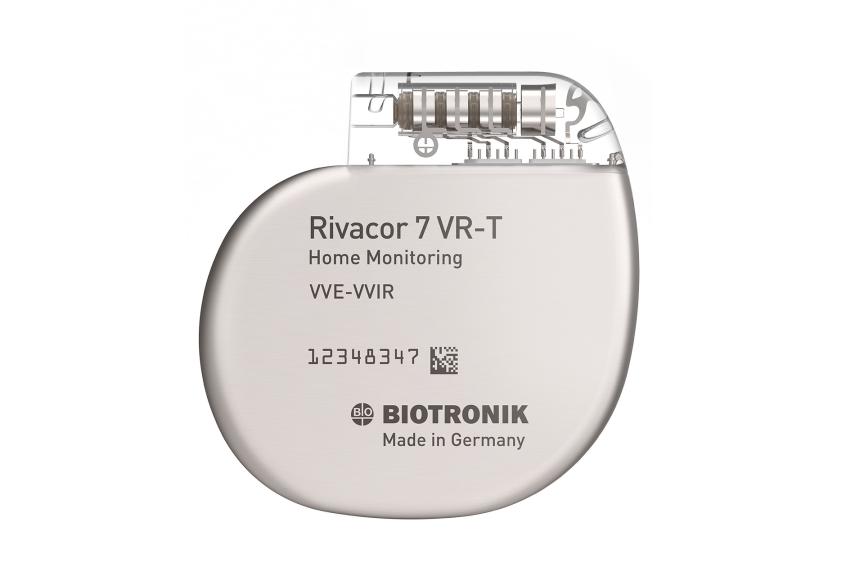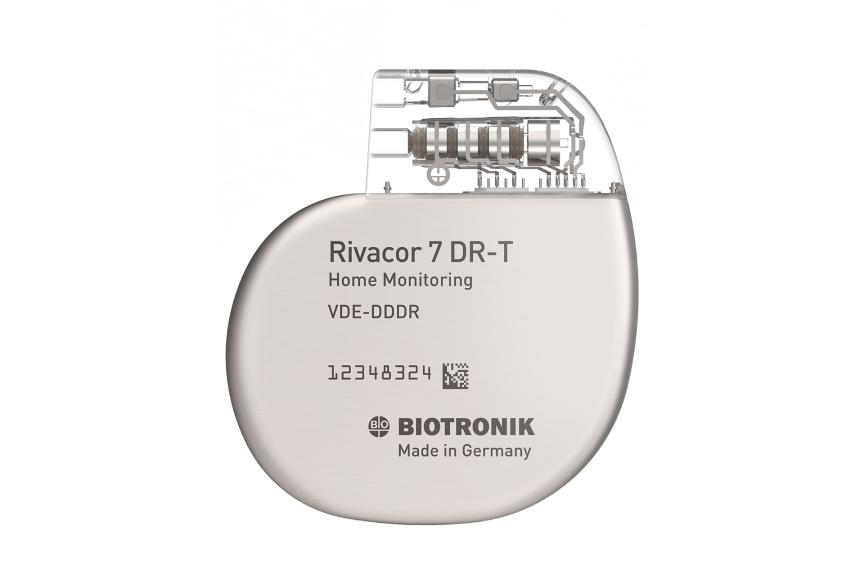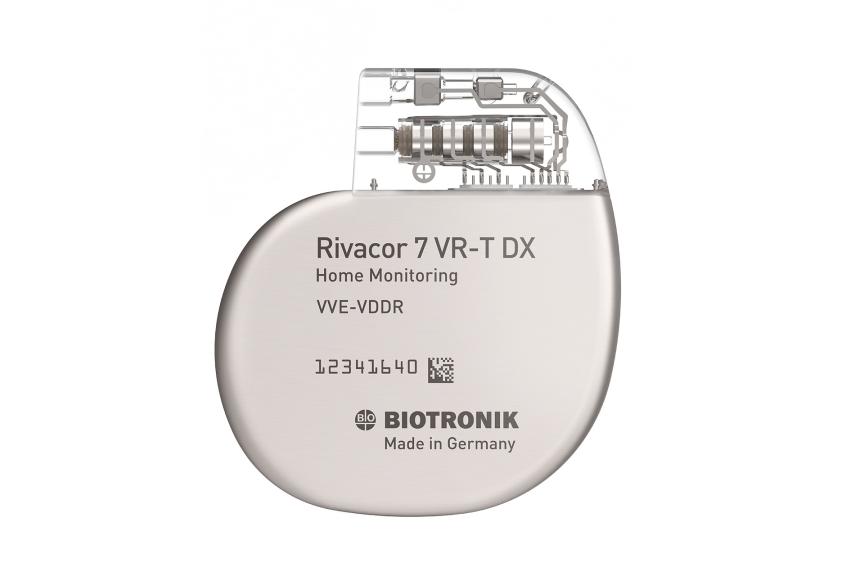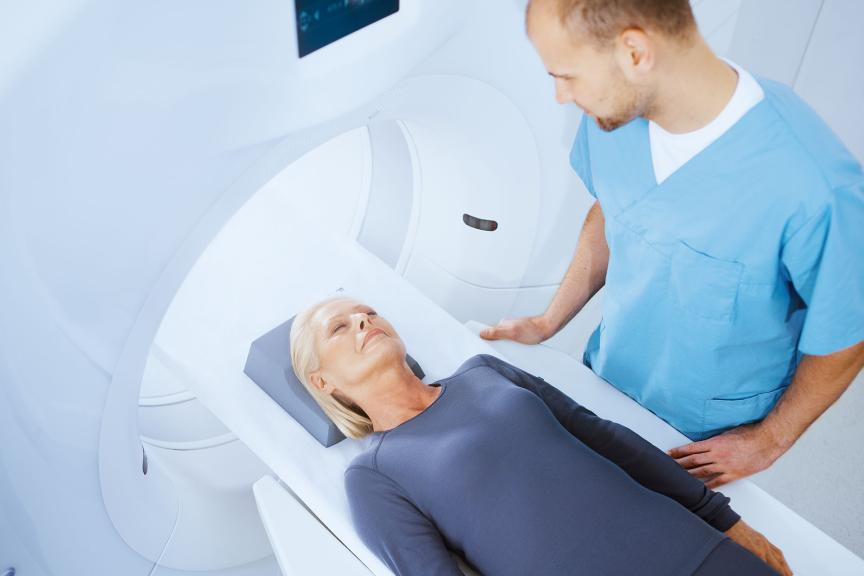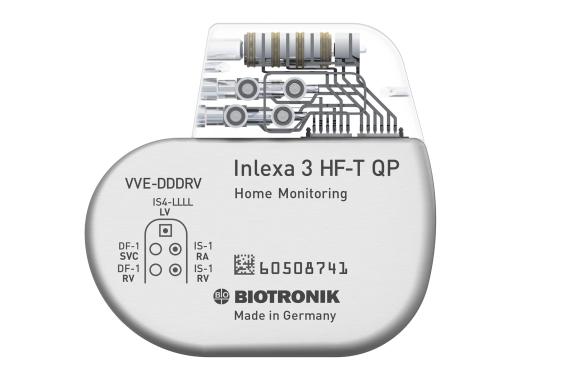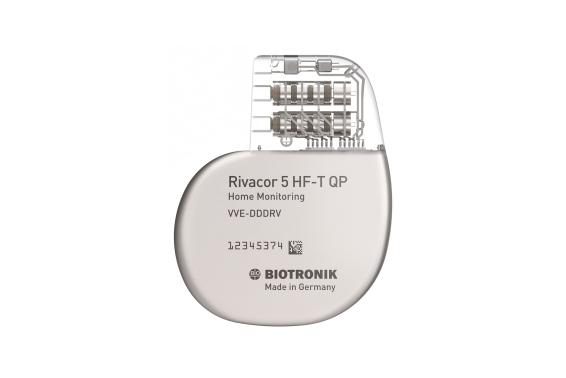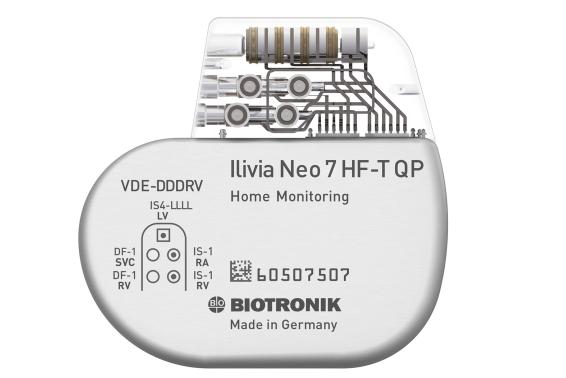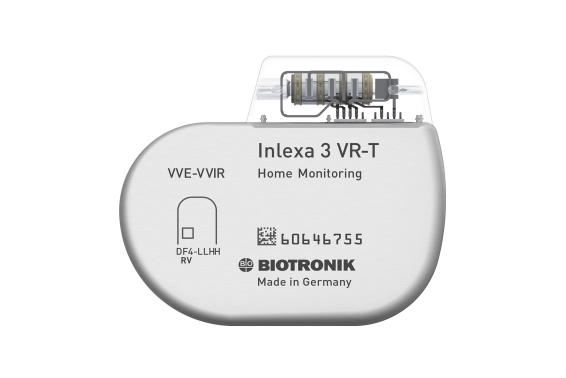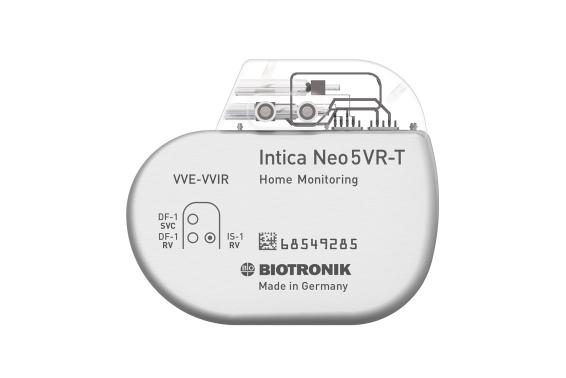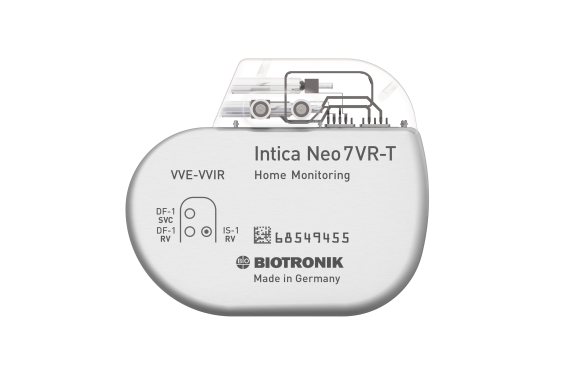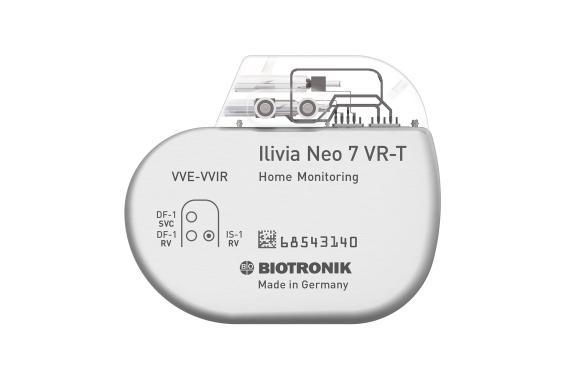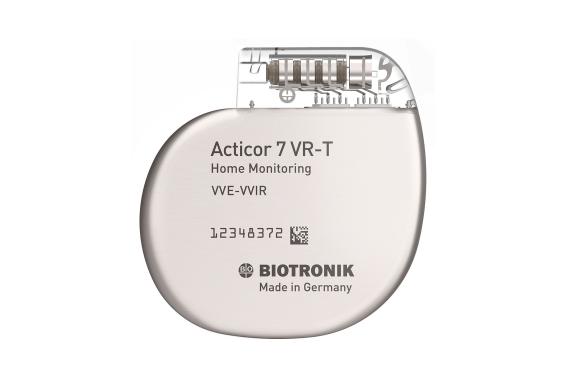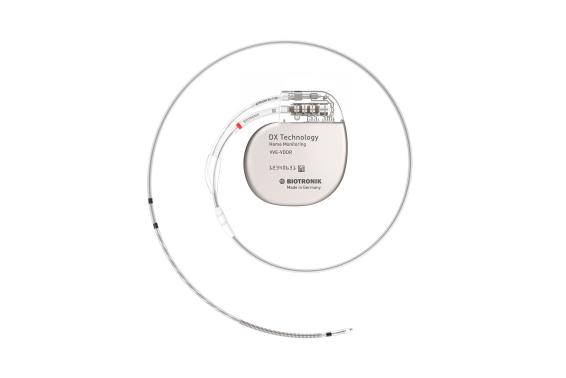Rivacor 7 DR-T/VR-T DX/VR-T
Verbesserte Behandlung und geringeres Risiko über einen Zeitraum von bis zu 15 Jahren1
Für Patienten mit Arrhythmien kann die ICD-Therapie ein lebenswichtiges Sicherheitsnetz darstellen. In diesem Zusammenhang ist es besonders wichtig, langfristig Risiken zu minimieren und die Lebensqualität zu verbessern. Genau dafür wurden die brandneuen, kleineren und einfacher programmierbaren ICD-Systeme Rivacor 7 mit einer Laufzeit von bis zu 15 Jahren konzipiert1 — Optimierung der Therapie, wann und wo es wichtig ist. In Kombination mit der Home-Monitoring®-Technologie können AF-Episoden früher erkannt2 und so die Zahl inadäquater Schocks und Krankenhausaufenthalte reduziert werden3. All dies wurde in klinischen Studien belegt.
Produkt-Highlights
BIOshape. Ultraflaches ICD (10 mm)
ICDs der Familie Rivacor sind klein und flach– mit nur 10 mm Dicke – und sie haben eine schlanke,elliptische und körperfreundliche BIOshape-Form4
15 Jahre Laufzeit. 10 Jahre Garantie.
ICDs der Familie Rivacor haben eine verlängerte Batterielaufzeit von bis zu 15 Jahren1, mit 10 Jahren Vollgarantie
DX-Technologie
Alle genannten Vorteile sind auch mit der einzigartigen DX-Technologie verfügbar, die mit einer einzigen Elektrode eine vollständige atriale Diagnostik ermöglicht
Downloads und weitere Links
Kontaktieren Sie uns
Referenzen
1. Einkammer-ICD Standardbedingungen Rivacor 7 VR-T, RV: 2,5 V/0,4 ms, 40 bpm, 500 Ω; RV: 15 % Stimulation; 2 Schocks/Jahr mit max. Energie; Home Monitoring: EIN (tägliche Übertragung) Diagnostik: EIN. Daten liegen vor (Laufzeitberechnung).; 2. Varma N et al. Efficacy and Safety of Automatic Remote Monitoring for Implantable Cardioverter-Defibrillator Follow-Up: The Lumos-T Safely Reduces Routine Office Device Follow-Up (TRUST) Trial. Circulation, 2010;122: 325 – 332.; 3. Guedon-Moreau L et al. Decreased delivery of inappropriate shocks achieved by remote monitoring of ICD: a substudy of the ECOST trial. J Cardiovasc Electrophysiol, 25 (2014), 763-770.; 4. Konturiertes Gehäuse; Acticor/Rivacor VR: 60 x 61,5 x 10 mm; 30 ccm.; 5. Als Teil eines MR Conditional-Systems.; 6. Post-Market-Untersuchung; Abschlussbericht, März, 2019. Daten liegen vor.; 7. Analyse der Implantatform, Februar 2019. Daten liegen vor.; 8. Post-Market-Untersuchung; Zwischenanalyse, 21. Dezember 2018. Daten liegen vor.; 9. Acticor/Rivacor Einkammer-ICD bei 60 bpm, 15 % Stimulation, 2,5 V, 500 Ohm: Medtronic Full-Body-MRT mit 3 T; VISIA AF (EVERA; MIRRO) MRI S VR SureScan: 10,7 Jahre (Gebrauchsanweisung von MDT) vs. Acticor 7 VR-T ProMRI: 14,9 Jahre. Wettbewerber-Implantathandbücher von Nov. 2018.; 10. Polyzos KA, Konstantelias AA, Falagas ME, Risk factors for cardiac implantable electronic device infection: A systematic review and meta-analysis, Europace (2015) 17, 767-777.; 11. Patienten ohne atriale Arrhythmien in der Vorgeschichte bei Implantation.; 12. Biffi M, Iori M, De Maria E, et al. The role of atrial sensing for new-onset atrial arrhythmias diagnosis and management in single-chamber implantable cardioverter-defibrillator recipients: Results from the THINGS registry. Journal of Cardiovascular Electrophysiology, Band 31, Ausgabe 4, April 2020, Seiten 846–853.; 13. Pung X, Hong DZ, Ho TY, et al. The utilization of atrial sensing dipole in single lead implantable cardioverter defibrillator for detection of new-onset atrial high-rate episodes or subclinical atrial fibrillation: A systematic review and meta-analysis. Journal of Arrhythmia. Band 38, Ausgabe 2, 15. Januar 2022, Seiten 177–186. 14. Thomas G, Choi DY, Doppalapudi H, et al. Subclinical atrial fibrillation detection with a floating atrial sensing dipole in single lead implantable cardioverter-defibrillator systems: Results of the SENSE trial. Journal of Cardiovascular Electrophysiology, Band 30, Ausgabe 10, Oktober 2019, Seiten 1994–2001.; 15. Hindricks G, Theuns DA, Bar-Lev D, et al. Ability to remotely monitor atrial high-rate episodes using a single-chamber implantable cardioverter-defibrillator with a floating atrial sensing dipole, EP Europace, Band 25, Ausgabe 5, Mai 2023, Seiten 1-10, euad061.; 16. Fact file: Cardiac Imaging with MRI, CT and Nuclear Techniques. British Heart Foundation. Januar 2010.; 17. Wenn Patienten mit BIOTRONIK Home Monitoring überwacht werden. Alle Detailinformationen siehe ProMRI-Handbuch.; 18. Schwab JO et al. Clinical Course of Dual-Chamber Implantable Cardioverter-Defibrillator Recipients followed by Cardiac Remote Monitoring: Insights from the LION Registry. BioMed Research International, 2018, https://doi.org/10.1155/2018/3120480.; 19. Ricci R P et al. Long-term patient acceptance of and satisfaction with implanted device remote monitoring. Europace (2010) 12, 674-679.; 20. Hindricks G et al. Implant-based multiparameter telemonitoring of patients with heart failure (IN-TIME): a randomised controlled trial. The Lancet. 2014; 384 (9943): 583–590.; 21. Crossley G H et al. The CONNEXT (Clinical Evaluation of Remote Notification to Reduce Time to Clinical Decision) Trial. JACC. 2011; 57(10):1181–1189 [nur für Balkendiagramm-Vergleich].

